Table of Contents
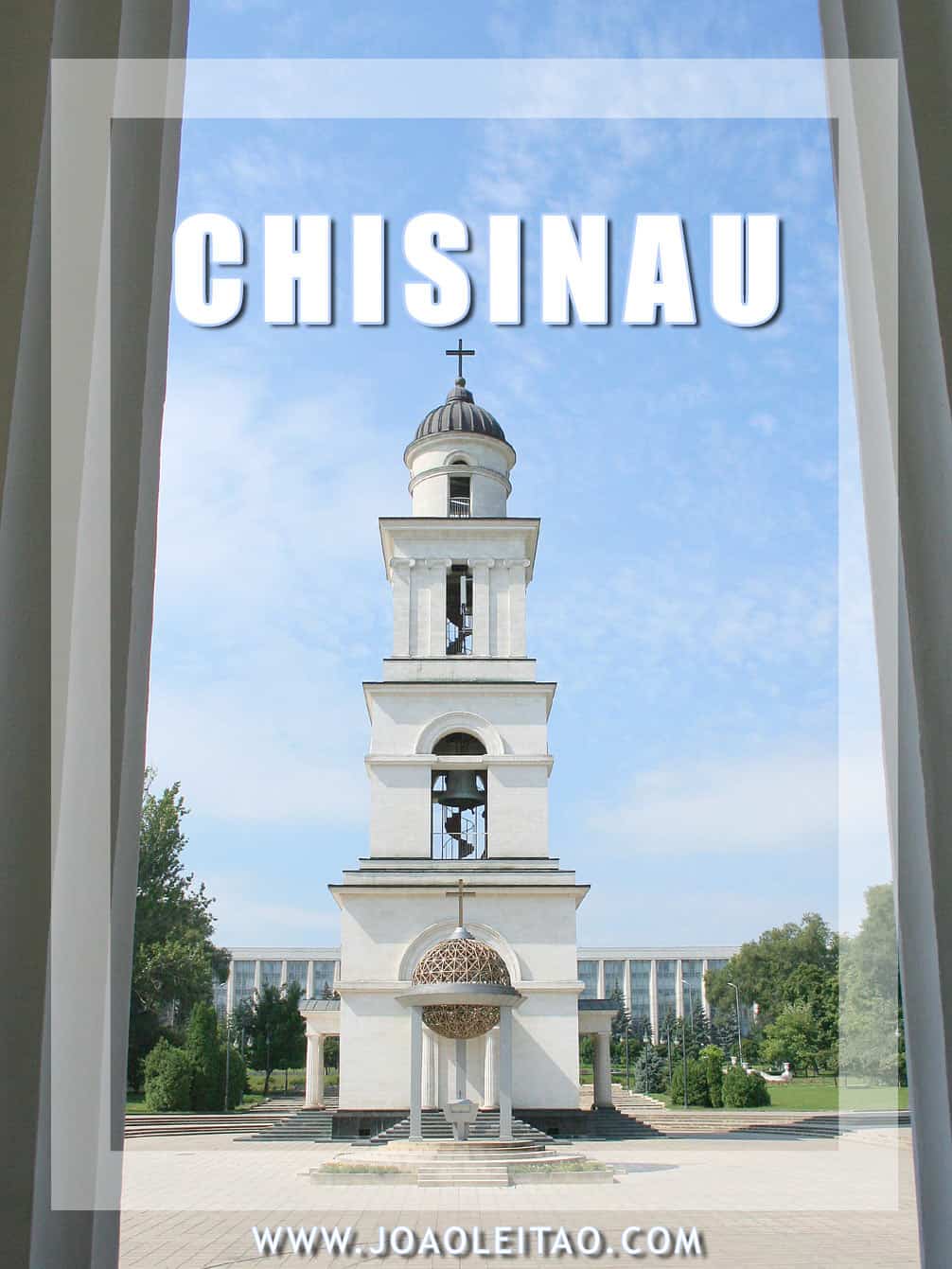
Chisinau is the capital of Moldova and also known as Kishinev. Despite the years that have gone by, it’s still an open-air museum of the Soviet era, with clear examples of those times in architecture and the locals’ customs. In other words, it’s a city with not a lot to see but a lot to experience.
You can’t visit Moldova without spending some time in Chisinau. If you don’t include this city in your itinerary, you’ll be missing out on a must-visit destination. On this page, I share with you a practical city guide with the best places to visit in Chisinau.
The capital city of Moldova has about three million people but the atmosphere and feel of a small remote village. Chisinau historic center is compact and easy to explore on foot, with most points of interest within walking distance from one another.
In addition to the must-see places, the city is worth visiting for its unique character. They’re not very used to having foreign tourists, but the people of Chisinau are quite friendly and you can’t leave the city without trying the legendary Moldovan brandy.
Quick travel tips to visit Chisinau:
- Wake up early and be the first at monuments, museums, and other attractions.
- Don’t skip visiting the Chisinau Triumphal Arch that marks the center of the city.
- The central market is one of the liveliest places in the Moldovan capital, open from 5:00 am until late in the afternoon.
- Chisinau has plenty of hostels, some of them quite interesting businesses.
- You can take advantage of the proximity and visit Tiraspol in Transnistria and take a day trip to that non-existing country that was born from the separation of the Russian part of Moldova after a short war that followed the collapse of the Soviet Union.
Chisinau Top 5
Nativity Cathedral
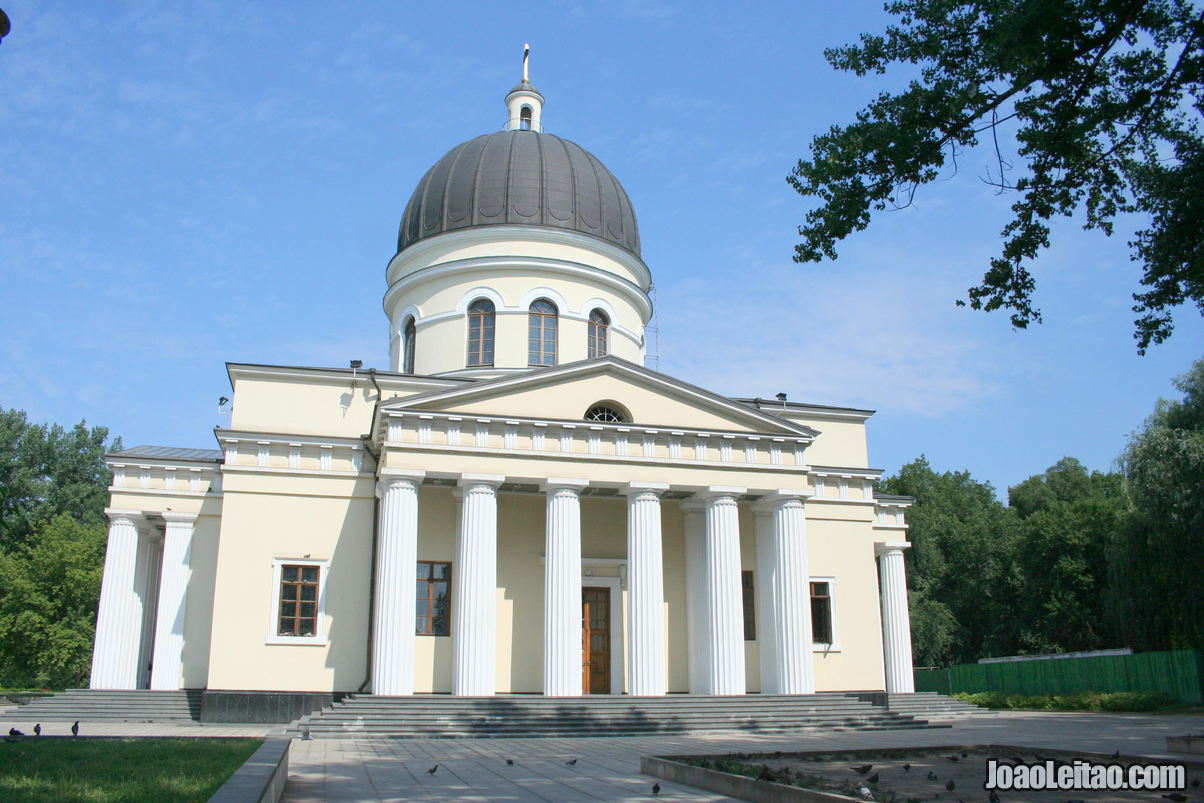
Triumphal Arch
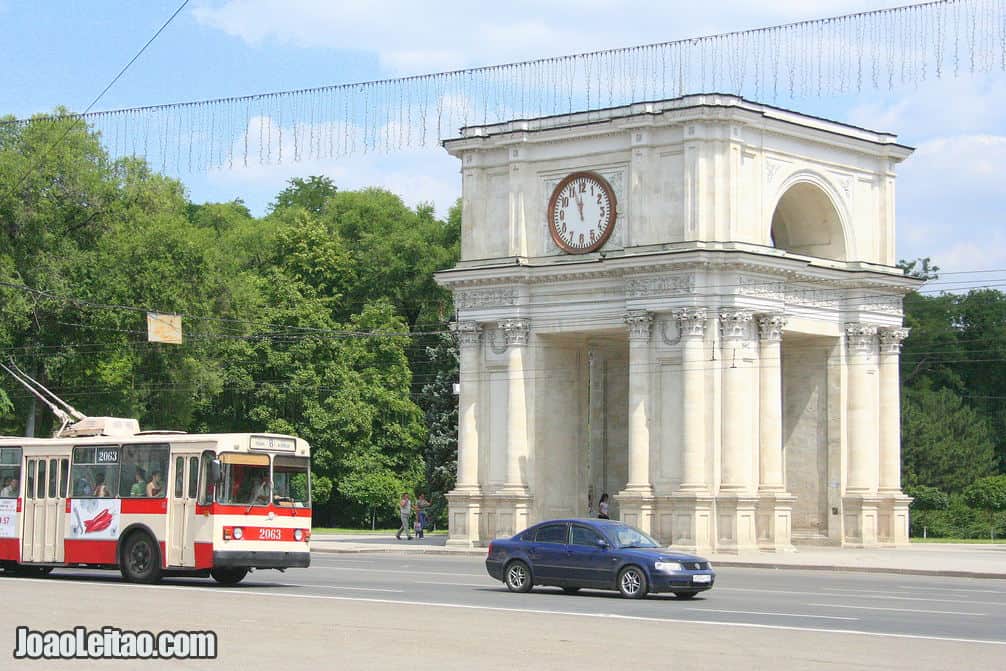
Ciuflea Monastery
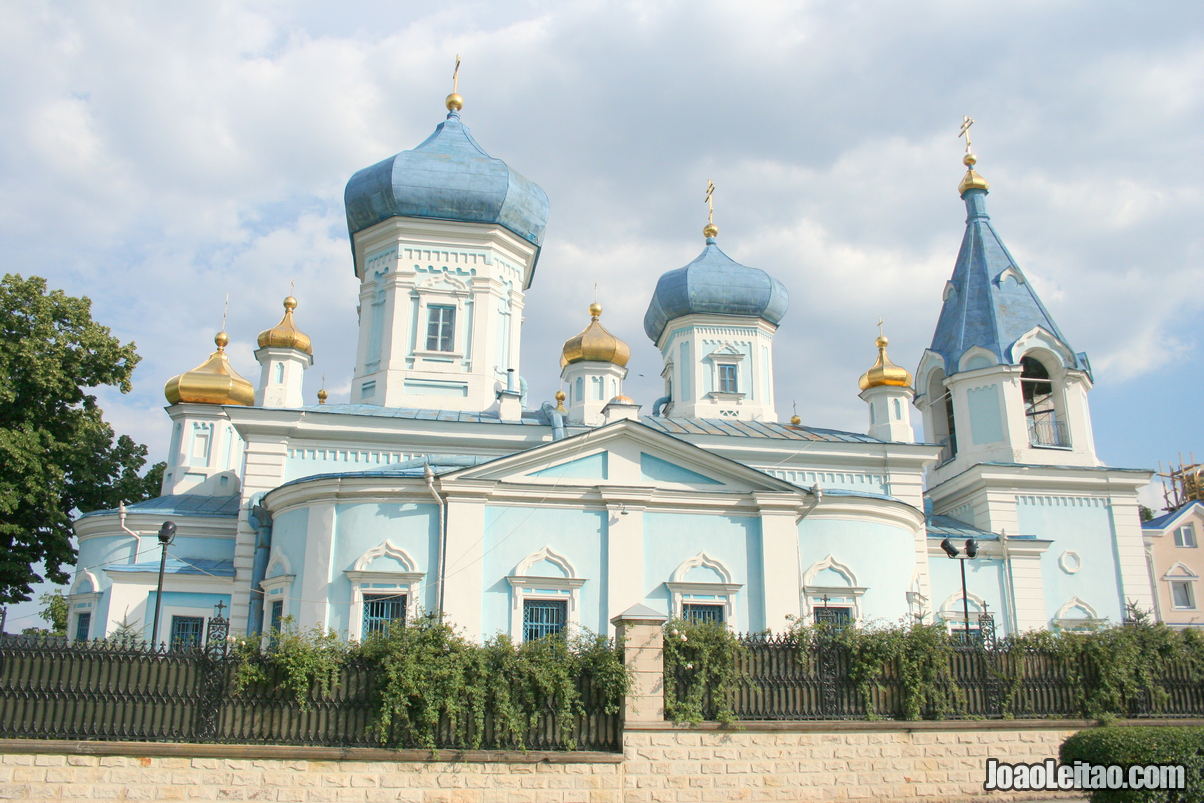
Central Market
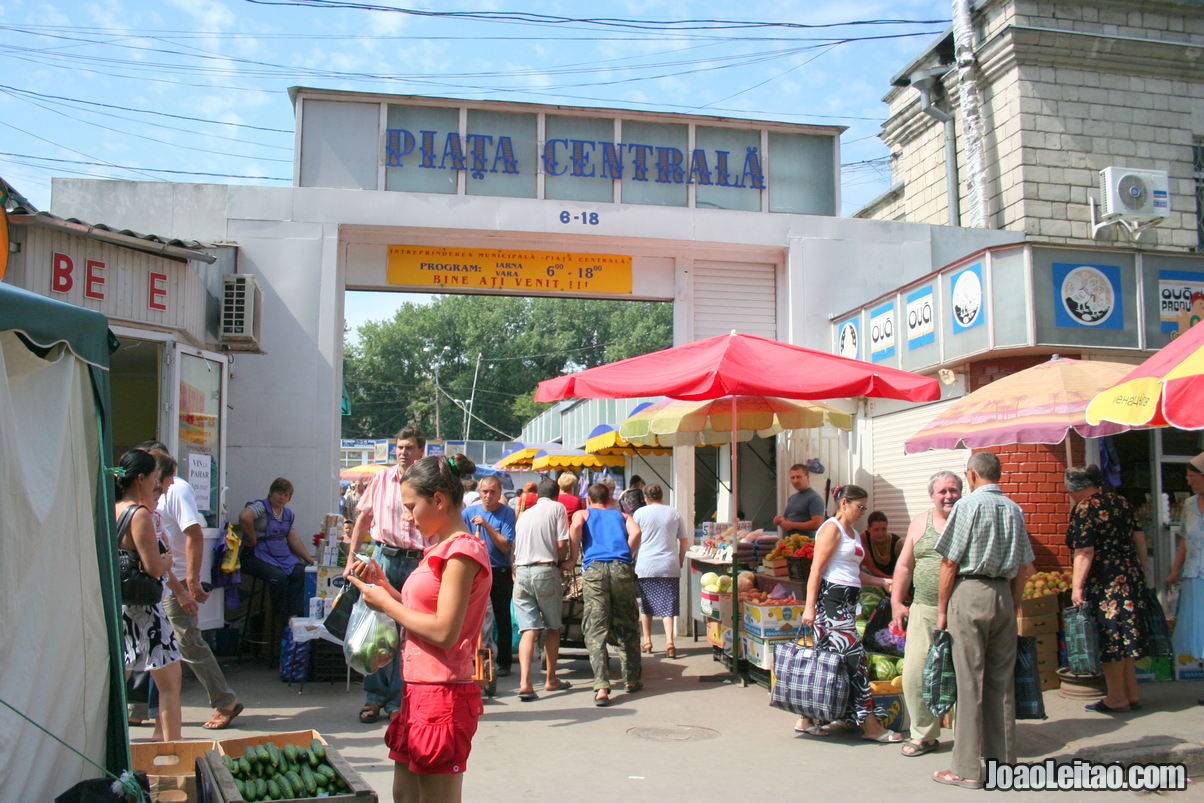
National Museum
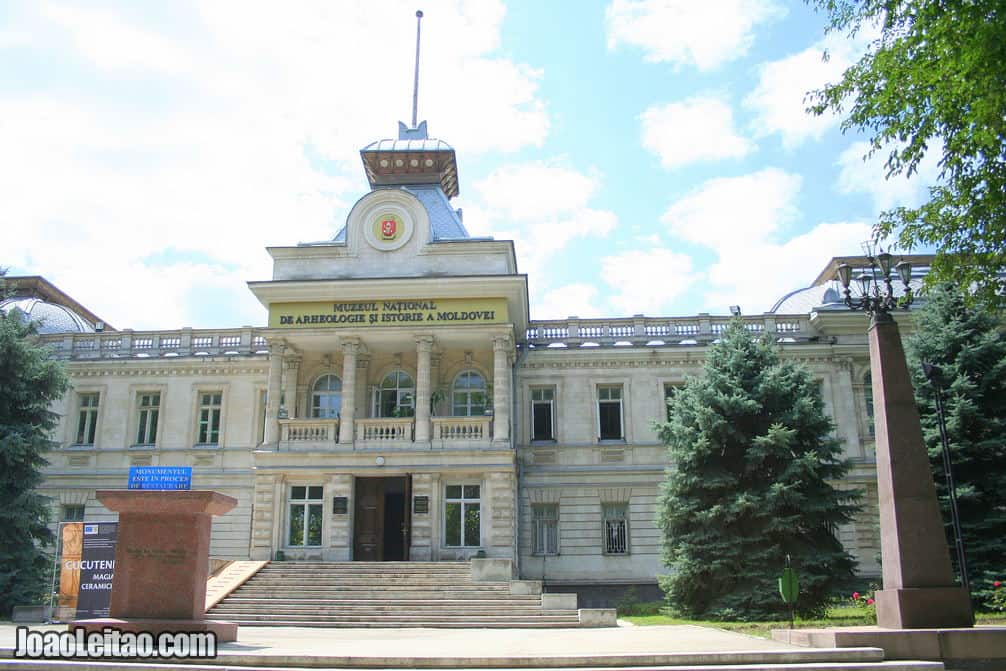
What to visit in Chisinau
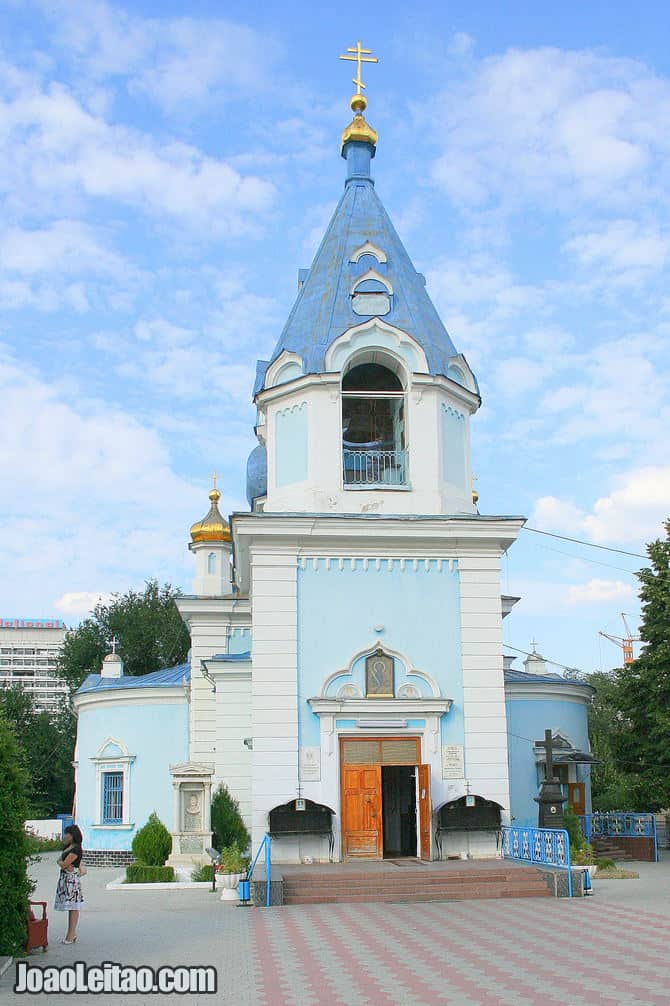
Most famous sites
- Army Museum
- Repression Memorial
- Central Market
- Water Tower
- Valea Morilor Park
- National History Museum in Chisinau
- Pushkin House Museum
- Triumphal Arch
- Nativity of Christ Metropolitan Cathedral
- National Museum of Ethnography and Natural History
- Alley of Classics
- Street markets
Map of Attractions
Tours in Chisinau
Chisinau City Guide
Repression Memorial
This memorial pays tribute to the Moldovans who were deported to labor fields to remote locations in the Soviet Union from 1940 to 1951. The memorial, appropriately, is located near the central train station from where trains departed full of those exiled people.
Right after the independence of Moldova, in 1990, following the fall of the Soviet Union, a temporary memorial was placed there. It was a monolith with a commemorative plaque. The definite memorial was inaugurated in 2013, a series of anthropomorphic statues walking dramatically to exile on a base made of stone. The sculpture was created in Belarus and later transported to its final destination, Chisinau.
Central Market

This is a market you really can’t miss. It’s one of the liveliest places in the Moldovan capital city, open from 5:00 am until late in the evening. Here at Piata Centrala, as the locals call it, you can buy everything especially food.
You can browse a wide variety of fruits and vegetables, honey, bread, wine and brandy, meat, fish, and dry fruits. Take a closer look at the cheese area, which is both photogenic and… fragrant. There are areas in this market selling handmade products and, again, the sky is the limit regarding what you can find here: shoes, clothes, electronics, cookies, preserves.
Small producers and vendors are particularly impressive, including people who have no more than a hand full of tomatoes or a couple of celery sticks from their gardens to sell, or old people who try to earn a few Leis with clothes they don’t need anymore.
When browsing the food area don’t forget that tasting is part of the experience and so is bargaining when you find something you’d like to buy.
Water Tower
The Water Tower is on the way from the city center to the popular Valea Morilor Park. It’s a classic structure built at the end of the 19th century and designed by Alexander Bernadazzi. It was once an essential part of the city’s water supply system. The top, made of wood, was destroyed in an earthquake and rebuilt between 1980 and 1983 into what you see today.
The tower is mainly made of stone and some brick and it’s 22 meters high. Inside there’s a spiral staircase that was later complemented with an elevator. For a while, this tower was the headquarters of the History Museum of Chisinau.
Valea Morilor Park
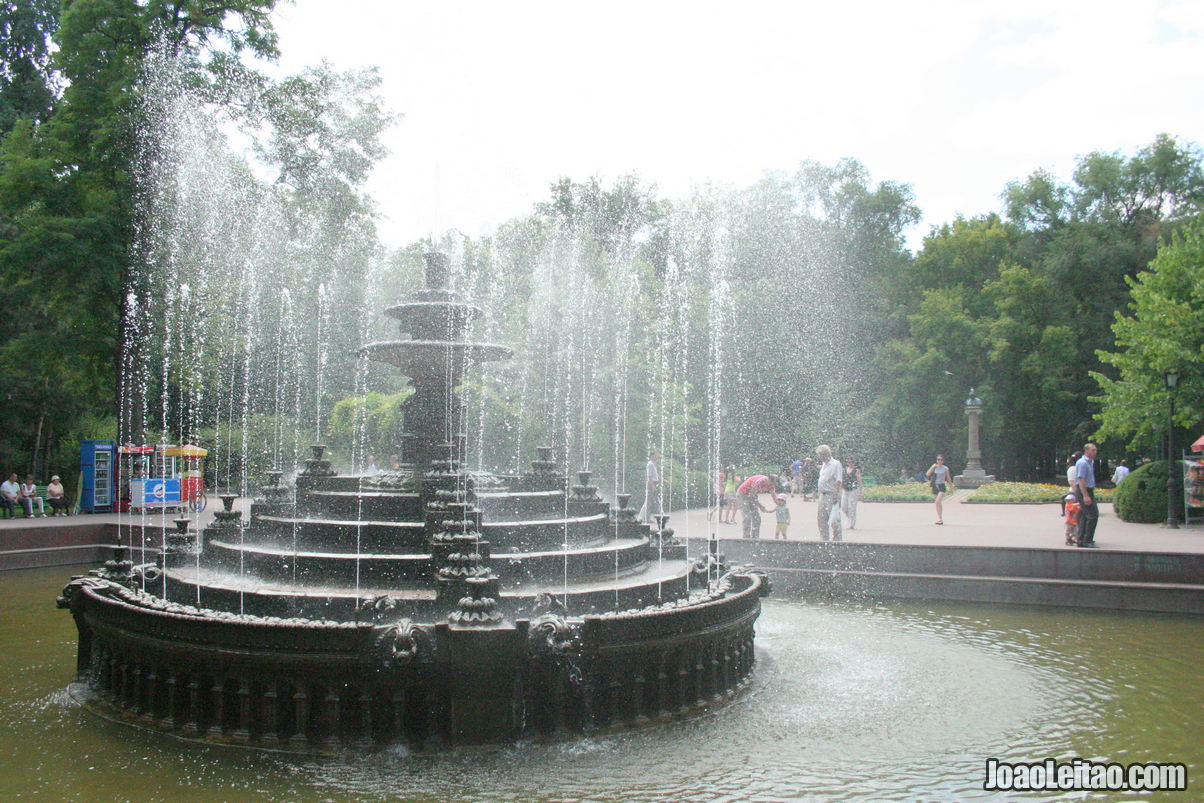
This spacious urban park is within walking distance from the city center. It was created in 1950 and covers an area of 114 hectares. It has multiple entrances but the most impressive one is the 218-step staircase. It includes a large lake, with a 2.5 km perimeter, around which you can ride a bike, run, or just walk.
Here you’ll find all the leisure and recreational equipment you’d expect to find in a park like this including cafes and restaurants, game fields, children’s playgrounds, and even an open-air cinema with the capacity for 5,000 viewers.
There’s a memorial to police officers killed in the line of duty and secluded areas tucked away behind leafy trees. It’s the perfect place to observe Chisinau’s locals who flock here on weekends and at the end of the day.
Triumphal Arch
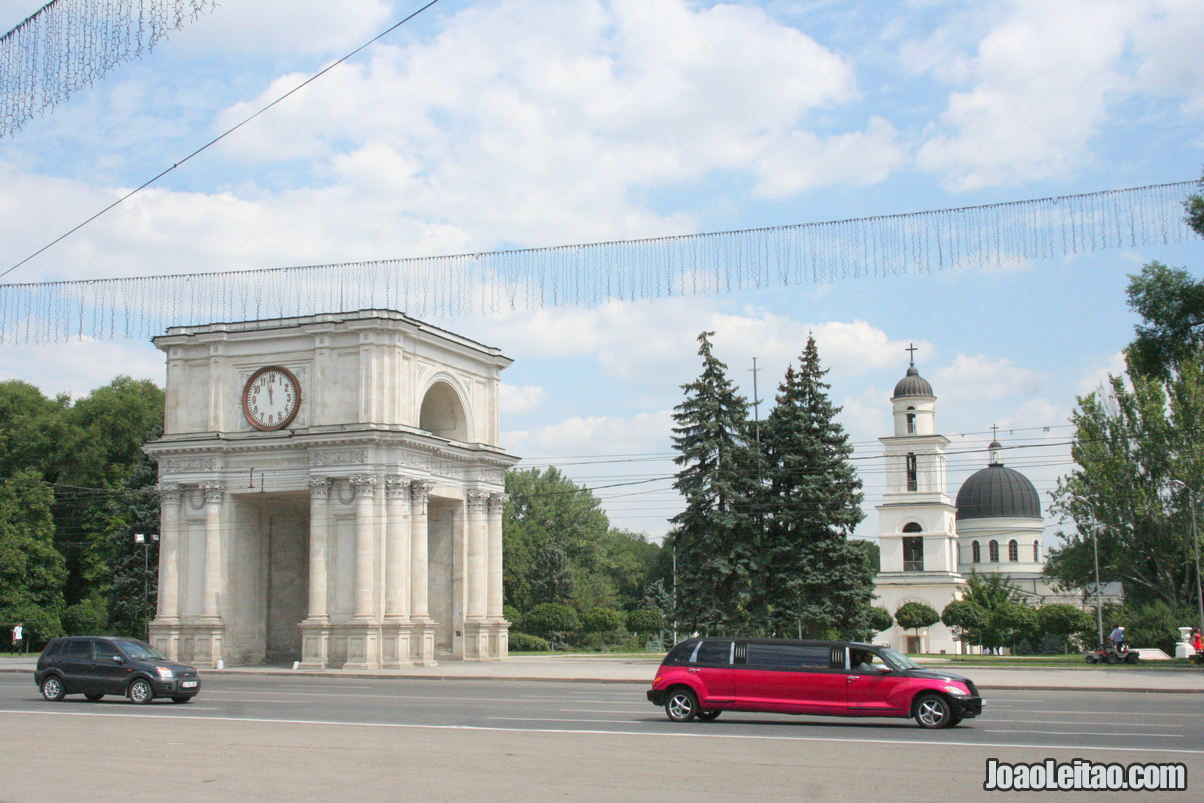
The Triumphal Arch of Chisinau, also known as the Sacred Gate, was built in 1840 and designed by architect Zaushkevich. It officially marks the center of the city. It was built to celebrate the victory of Russia over the Ottoman Empire in the war of 1828-1829.
It underwent extensive renovation work in 1973 and a large 6.4 Kg bell was removed from the arch in 2001. It had been made with melted copper from Ottoman cannons captured during the war.
The Triumphal Arch of Chisinau is 13 meters wide and 10 meters high, and it’s a particularly photogenic structure, especially when the flag of Moldova is hoisted.
Nativity of Christ Metropolitan Cathedral
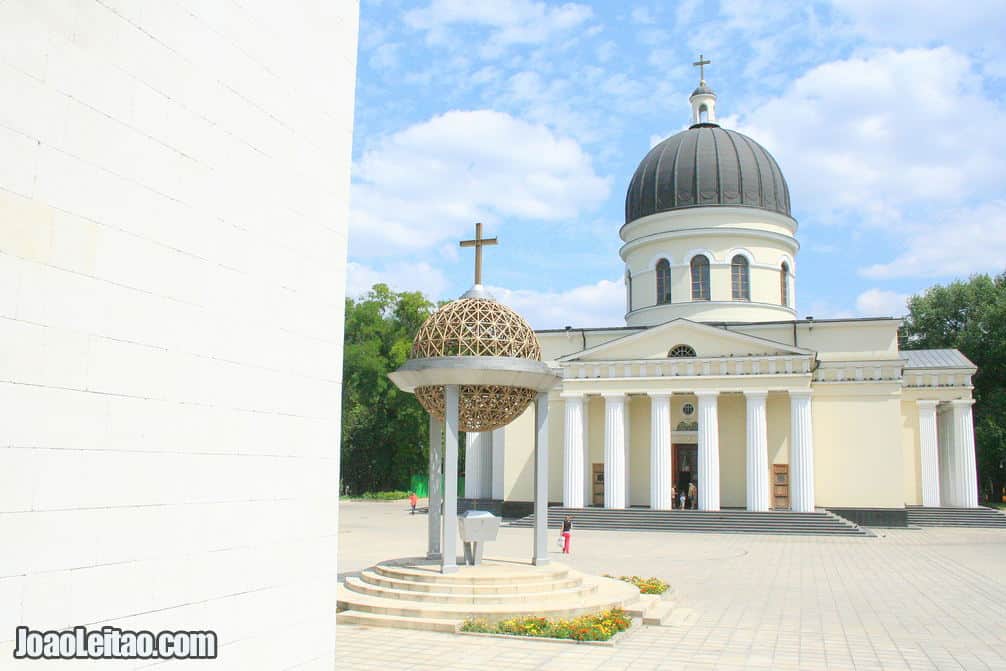
This cathedral is the main Orthodox temple in Chisinau and Moldova. It was built in 1830 by orders of the New Russia governor, Prince Mikhail Semyonovich Vorontsov. The style is influenced by the Neo-Classical, a design typically followed by its architect Abram Melnikov, and it’s one of the finest examples of Russian architecture in Chisinau.
The cathedral was bombed in the Second World War and the Communists destroyed its bell tower in 1962, and it was later rebuilt in 1997. During the Soviet era, all religious activities were forbidden and the building was used as a venue for cultural events and shows.
It’s a very austere-looking cathedral, both outside and inside. The six Doric columns are the top feature of the main façade, and behind it, you can see the dome covered in zinc that was added in 1997. There are three altars devoted to three saints inside.
Alley of Classics
The Alley of Classics is a pathway at the Stefan cel Mare park in the center of Chisinau. Here, among leafy trees and a lot of vegetation, you’ll see several busts depicting the great names of the Romanian and Moldovan literature.
It’s 28 statues in total, placed in alphabetical order, including a renowned foreigner, Alexander Pushkin, at one of the ends of the Alley. While the other busts are made of red granite, Pushkin’s is a bronze statue by Russian sculptor Alexander Opekushin.
The bust collection was created in 1958 but included only 12 sculptures until the independence of Moldova in 1990. The new government decided to add some of the best-known Romanian literary figures that had been excluded by the Soviet authorities, inspired by an identical series of busts in the Cismigiu Park in Bucharest.
Street Markets
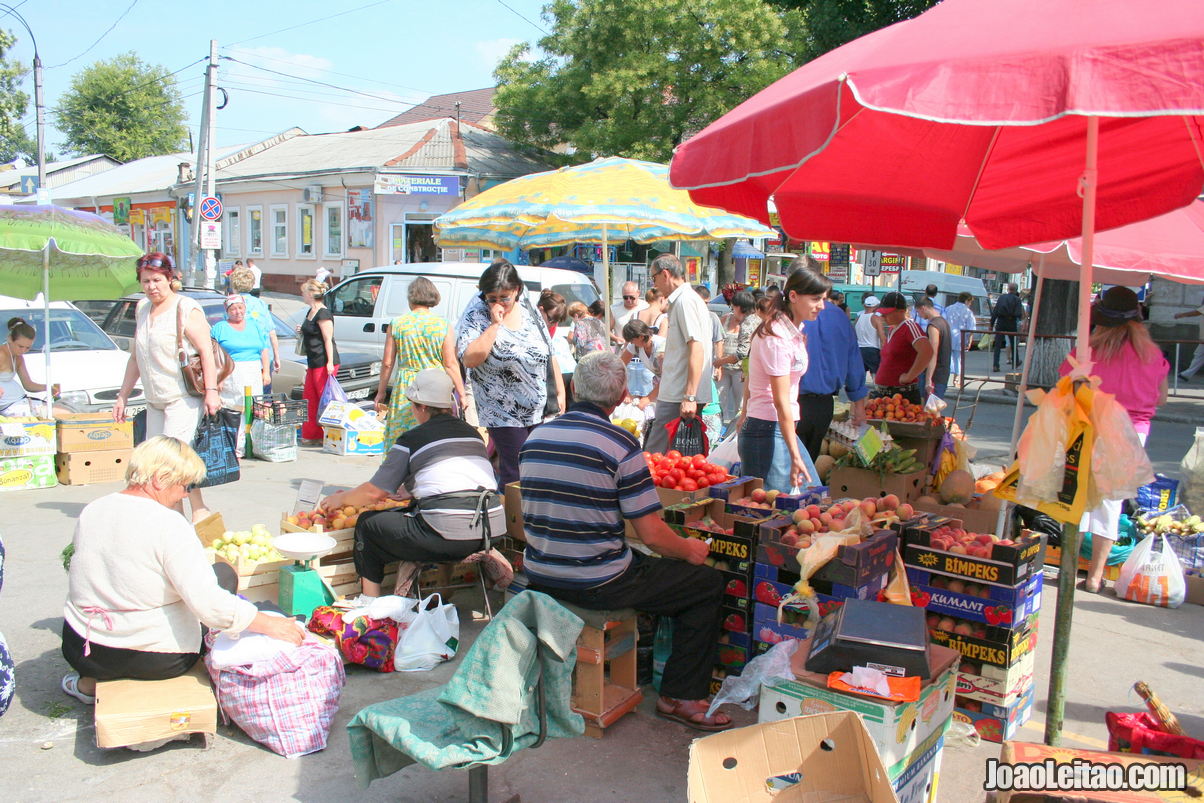
What Chisinau lacks in great monuments and museums it compensates with authentic markets and the genuine city life you can experience there.
The Flower Market, open from 10:00 am to 10:00 pm, is considered to be one of the most charming flower markets in Europe, stretching alongside the northwest side of the Cathedral Park, in a sea of color and fragrances.
Arts Square is the right place to buy a souvenir from Moldova. It might seem small at first sight, but this market dedicated to the arts and crafts has a diverse number of products from Soviet age memorabilia to paintings and from traditional instruments to carpets.
The Agricultural Wholesale Market at Calea Basarabiei is a farmer’s market created in 2006 where you can buy and sell all sorts of produce. Expect to find high-quality produce at affordable prices, and you can shop for groceries here from 7:00 am to 5:00 pm.
If you are a market enthusiast, don’t skip the Calea Mosilor, or Tolcioc as the locals call it. It’s a charming market about 10 minutes from the city center where you can buy a bit of everything from brandy to vegetables and fruits. It’s not as intense as the central market, but its quiet nature is also an attraction.
Museums in Chisinau
National History Museum in Chisinau

This museum was founded in 1983 and it’s housed in a building erected on the ruins of the Regional Lyceum destroyed in an earthquake in 1977.
It has 12 exhibition rooms and a massive diorama depicting a battle of the Second World War created by artists Nikolay Prisekin and Alexey Semyonov.
The museum has a total of 350,000 pieces. The archaeological findings, the document and photograph archive, and the numismatic section are the top highlights. But there is more to visit including the old weapons, art pieces, ethnographic objects, historical books, stamps, tools, everyday life objects, and several artifacts.
The museum is open every day except Fridays, from 10:00 am to 5:00 pm and the ticket costs 10 Leis.
National Museum of Ethnography and Natural History
It’s the oldest museum in Moldova with collections in the fields of geology, paleontology, zoology, entomology, archaeology, ethnography, and numismatics.
It opened for the first time in October 1889, when the first agricultural expo of Bessarabia took place, organized by Baron A. Stuart. Since then, it’s gathered an impressive collection of over 135,000 pieces, some of them on display at the museum’s two main sections. One is dedicated to the fauna and flora of Moldova and the other one is dedicated to the people of Bessarabia and their traditions.
The building of the museum is also an attraction in itself. Built in 1905 and designed by architect V. Tsigankov, it has a clear Asian influence.
Army Museum
Visiting the Army Museum is a one of a kind experience. You can tell it doesn’t get a lot of visits, and a foreign tourist who shows interest in going there is exceptionally welcomed. The curatorship model is obsolete for the most part but that’s part of the magic of this place. The small collection includes different military pieces, photographs, documents, and medals.
Outside you can see some of the larger pieces like planes and war tanks made in Russia.
The section dedicated to the repression during the Soviet Union era is impressive but most of the legends are not in English. Therefore, you have to rely on your interpretation of what’s on display to understand it.
The Army Musem, at 47, Tighina street can be hard to miss. It’s open every day except Mondays and the admission fee is 10 Lei. You’ll have to pay an extra 10 Lei if you want to photograph inside.
Pushkin House Museum
Travelers in Chisinau can visit the house where the great master of Russian poetry, Alexander Pushkin (1799-1837), lived for three years.
In addition to visiting the poet’s quarters, where he lived from 1820 to 1823, still with his personal belongings and original furniture, you can go to a literature museum in a building across the street. There you’ll see an exhibition dedicated to Pushkin’s work and life.
When he lived in Chisinau, the author maintained his distinctive passionate, rowdy, and alcohol-prone lifestyle, but this was also the city where he wrote some of his most well-known works such as “The Prisoner of the Caucasus.”
The house museum is open from Tuesday to Sunday, between 10:00 am and 4:00 pm but if you want a tour in English, you must book in advance. The admission fee is 10 Lei plus an additional 10 Lei if you’re going to photograph the inside of the house.


